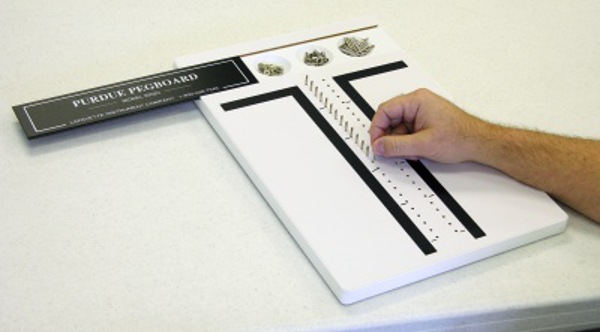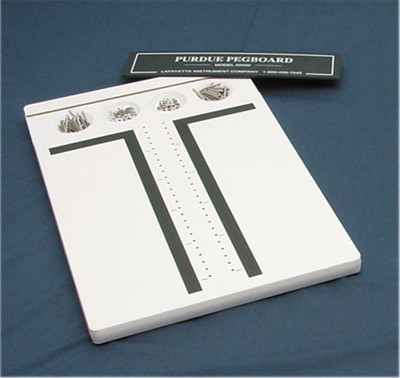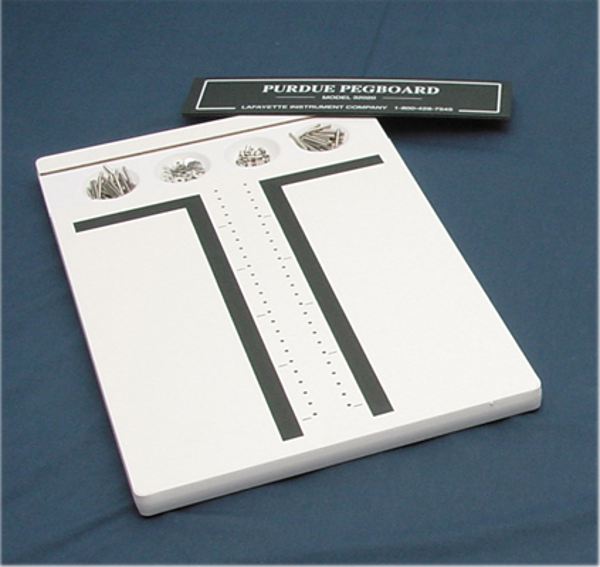 22nd Nov 2016
22nd Nov 2016
Purdue Pegboard Manipulation and Manual Dexterity Test
When I first saw a pegboard test I was reminded of a game I played as a child. But what looks like a game is actually a very effective tool for measuring manual dexterity. A study published in Disability and Rehabilitation found that the reliability of the pegboard test was excellent in evaluating hand function in a test-retest setting for patients over 60. Norms were used in order to evaluate what were dexterity deficits and what could be considered typical with aging, but the Purdue Pegboard consistently measured fine manual dexterity.

The Purdue Pegboard Manipulation and Manual Dexterity test is considered the gold standard in measuring manual dexterity. Here’s how the test works:
How to Use the Purdue Pegboard Manipulation & Manual Dexterity Test
The Purdue Pegboard was first developed by Joseph Tiffin, Ph.D. at Purdue University in 1948. Since then, the Purdue Pegboard test has been extensively used for evaluating both fine and gross motor dexterity and coordination of the hands, fingers, arms and fingertips during specific assembly tasks.
Its original use was for a factory setting, in order to evaluate and identify qualified candidates to work in assembly work. Since that time, the use for the Pegboard test has been expanded to be used in a rehabilitative setting specifically working with patients with Parkinson’s, Multiple Sclerosis, Stroke sufferers, and similar illnesses. The Purdue test can also be used by physical and occupational therapists in order to identify weakness or dysfunction following a hand injury. Not only can the test identify deficits, but it can be used to document rehabilitative progress and degree of disability.
The Purdue Pegboard Manipulation test comes with pins, collars, and washers which are located in four cups at the top of the pegboard. When testing the pegs are placed in the cup on the side being tested. While remaining seated, the subjects are then asked to remove the pegs and place them vertically in the holes as fast and consistently as they can. The subject gets 30 seconds and the score is calculated by comparing the completed test results against a chart of normative values.
The accuracy of the Purdue Dexterity test has been validated by research and is useful not just in patient’s over 60, but is also extremely accurate in evaluating dexterity for dual task performance which is useful in both pre-screening and screening job applicants in specific fields. Further, the Purdue Pegboard test has shown consistently in research to provide valuable results evaluating decrease in hand function as a specific disease progresses.
There is something to be said about not needing to reinvent the wheel. The reason the Purdue Pegboard Manipulation & Manual Dexterity test remains the standard test used for manual dexterity is because it provides consistent, reliable results in a time-efficient manner.
For more information about Physcial and Occupational Therapy Tools like Dexterity Tests please head over to ProHealthcareProducts.com.
| Purdue Pegboard Manipulation Dexterity Test | Purdue Pegboard Accessories Pins, Washers, & Collars | Scoring Forms for Purdue Pegboard Dexterity Test |






